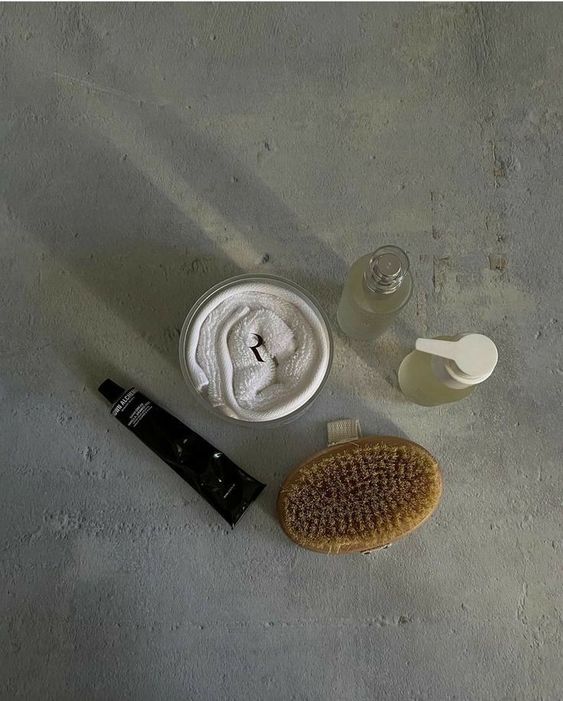
Have you ever stopped to think about the
structure of the skin and its functions?
It's a fascinating topic, full of twists and turns that are sure to make your head spin. From the outermost to the deepest layers, there is so much more to our skin than meets the eye. It's like a secret code, waiting to be deciphered by the curious few who dare to venture beyond the surface. So, grab your magnifying glass because we're about to dive deep into the world of skin layers. Let's get cracking! Or peeling, depending on your skin type…
Functions Of Human Skin
: All You Need To KnowNot all body organs are internal. We wear the largest one externally and it's called the skin. An adult's skin weighs about 8 pounds (3.6 kilograms; 6% of the total body weight) and is 22 square feet (2 square meters) long[1]. Our natural armor does more than make us look glowy and, without it, we would literally die. These are the actions that your skin makes on a daily basis:
- Stores water, electrolytes and fat[2][3]
- It is a sensory organ[2][3]
- Reduces harmful effects of UV radiation (via melanin production)[2][3]
- Synthesizes vitamin D (when exposed to sunlight)[2][3]
- Prevents transepidermal water loss[2][3]
- Is considered an immune organ as it detects infections[2][3]
- Regulates body temperature (through sweat production and vasodilation of blood vessels)[2][3]
- Acts as a barrier between germs and the environment, thus preventing the entry of pathogenic microorganisms[2][3]
- Provides a protective barrier against chemical, mechanical, thermal, and physician aggressors (including hazardous substances)
How Many Layers of Skin Do We Have?
The skin has three distinct layers, and each of them has been assigned a specific task: epidermis, dermis, and hypodermis (also called subcutaneous tissue or superficial fascia). Let's break them down in descending order.
Epidermis
The stratum basale, or stratum germinativum, is the deepest layer of the epidermis. It contains the stem cells that give rise to all the other layers of the epidermis -so the where
do skin cells come from?
conundrum has been solved [4][5]. These cuboidal cells are constantly dividing and differentiating, producing new skin cells (keratinocytes) that migrate upward towards the surface[4][5]. The stratum basale is attached to the basement membrane, which separates it from the dermis[4][5]. Melanocytes and merkel cells are also found in this layer[4][5]. The first ones produce the pigment melanin that gives skin its color and protects it from the harmful effects of ultraviolet radiation[4][5]. The latter, on the other hand, act as light touch receptors.[4][5]The stratum granulosum has 3-5 layers of cells of grainy appearance[4][5]. This is where cells start to produce keratin, a tough, fibrous protein that gives skin its strength and resilience[4][5]. These cells contain keratohyalin granules (keratin precursors), which are crucial for the aggregation of keratin filaments that form a compact barrier. Lamellar granules are also found inside the cells[4][5]. Their function is to produce the glue, consisting of lipids, glycolipids, and polyssacharides, that hold the cells together[4][5].
The stratum spinosum, or prickle cell layer, is characterized by 8-10 rows of irregular-shaped (polyhedral) cells with spiny projections (desmosomes) that connect them[4][5]. This layer is responsible for the skin's tensile strength and also houses the Langerhans' cells, which initiate and regulate the immune function (by presenting antigens to T cells)[4][5].
The stratum lucidum is a thin, translucent layer found only in the thick skin of the palms and soles of the feet[4][5]. It consists of 2-3 layers of dead skin cells that are located between the stratum granulosum and stratum corneum. It is composed of eleidin, a conversion product of keratohyalin[4][5].
The stratum corneum, or horny layer, is the epidermis' outermost layer and is made up of 20–30 cell layers of flattened, tough, and tightly packed dead skin cells (keratinocytes)[4][5]. These cells act as a shield between the skin and the outside world, defending it from harm and halting water loss[4][5]. The stratum corneum constantly sheds old cells and grows new ones, with new cells rising from lower layers to take their place[4][5]. So,
how often do skin cells replace themselves?
From the stratum basale to the corneum one, it will take 40-56 days for skin cells to shed[6].Dermis
The dermis is thicker than the epidermis (1–4 mm on average) and comprises two layers of connective tissue (collagen and elastin fibers): the papillary and reticular layers[4][5]. They link to the epidermis at the level of the basement membrane and fuse together without a distinct boundary[4][5].
The papillary layer is the upper, thinner layer, just below the epidermis, and is made up of loose connective tissue[4][5]. It has several vascular networks that provide two essential functions. The first one supports the epidermis by supplying it with necessary nutrients, and the second is the thermoregulation network[4][5]. By adjusting blood flow, the vessels can either store or release heat[4][5].
The reticular layer, which is the deeper, thicker, and less cellular layer, is composed of dense connective tissue and bundles of collagen fibers[4][5]. This zone of the dermis is home to the sweat glands, pilosebaceous units (hair shaft, hair follicle, sebaceous gland), muscles, nerve endings, and blood/lymphatic vessels[4][5]. The reticular dermis is responsible for maintaining the skin's overall firmness, elasticity and suppleness[4][5].
Hypodermis
Also known as the subcutaneous tissue or fascia, is the deepest layer of the skin, just under the dermis, and is made up of fat cells (adipocytes) organized in lobules[4][5]. Structures such as blood vessels, hair follicles, and sensory neurons are also found in this layer[4][5].
The hypodermis serves an important role as it helps to:
- Store energy[4]
- Protect the body from mechanical injury by absorbing shock[4]
- Connect the upper layers of the skin to muscles and bones[4]
- Insulate the body against cold and heat, thus regulating its temperature[4]
- Produce hormones like leptin (inhibits hunger, increases energy expenditure)[7] and vitamin D (when the skin is exposed to sunlight)[8]
The Takeaway: Are We On The Same Page?
So, there you have it:
the structure and function of the skin
. A delightful combination of dead/fat cells, sweat, sebum and other lovely guests like the blood vessels, the hair follicle, and the nerve endings. The skin is often taken for granted, but it plays a crucial role in protecting the body from the outside world. Who knew your skin was so complex? It is in this complexity where its beauty resides and it also helps us understand how to better care for it. For more information regarding your skin, make sure to follow us on Instagram, Facebook, Pinterest, and LinkedIn.References:
[1] National Geographinc Article - Skin
[3] www.msdmanuals.com - Skin Disorders
[4] www.utmb.edu - Dermatology
[5] www.ncbi.nlm.nih.gov - NBK470464
[6] www.ncbi.nlm.nih.gov - PMC2861991




